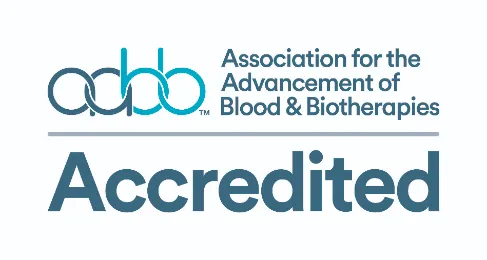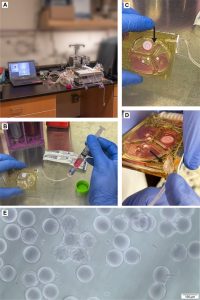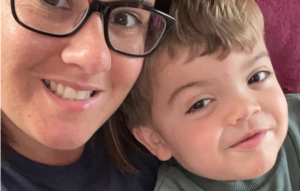Signals, Jun 29, 2023
by Kevin Robb
Mesenchymal stromal cells (MSCs) have been at the front line of cell therapy and regenerative medicine efforts for decades. Investigators hotly pursued MSCs as prospective cell therapies for a wide range of diseases, but enthusiasts were left wanting when several large clinical trials failed to meet their efficacy endpoints. While the MSC field may have stumbled out of the gate on the race to the clinic, there is now renewed optimism that MSCs may be starting to deliver on their early promise.
MSCs are derived from adult tissues such as the bone marrow and fat, as well as from discarded umbilical cord tissues. The proliferative cells can be cultured in a dish or in bioreactors to generate large quantities of culture-expanded MSCs. Initially, MSCs were thought to be a population of stem cells, but the field now recognizes that culture-expanded MSCs do not typically behave as stem cells when administered clinically. Instead, their multimodal functionalities, including the ability to reduce inflammation, support blood vessel formation, and remodel scar tissue make MSCs attractive cell therapy candidates.
As of writing, there are ten MSC products approved worldwide, with many more in late-stage clinical trials. Notably, this includes a MSC product that was approved by Health Canada in 2012 for children with steroid-refractory graft-versus-host disease (GVHD); however, the product was never used in Canada following its transfer from Osiris Therapeutics to the Australian company Mesoblast. No MSC products have been approved in the United States, but earlier this year Mesoblast resubmitted a Biologics License Application for their MSC product, remestemcel-L, to be considered for regulatory approval by the U.S. Food and Drug Administration (FDA).
It has taken more time than some had hoped, but the MSC field is finding its footing. In a recent panel discussion at the International Society for Cell & Gene Therapy (ISCT) Annual Meeting, experts convened to discuss lessons learned, current challenges, and the path forward to leverage successful MSC therapeutics. The esteemed panel was moderated by Dr. Jacques Galipeau (University of Wisconsin) and Dr. Yufang Shi (Soochow University), and included Dr. Ivan Martin (University of Basel), Michael Schuster (Mesoblast), and Dr. Sowmya Viswanathan (University Health Network, Canada).
Selecting the right patients for MSC treatment at the right time
A common observation in clinical trials involving culture-expanded MSC treatments, irrespective of the targeted disease, has been that about 50 percent of patients tend to show positive responses to the treatment while the remainder show minimal or no benefit. This observation begs some key questions, including what distinguishes a patient “responder” from a “non-responder,” and can specific disease features be used to select or stratify patients who may be more likely to benefit from a MSC treatment?
In GVHD and heart failure, Schuster shared insights from Mesoblast’s clinical findings that indicated patients with higher levels of inflammation immediately prior to MSC treatment tended to show improved responses to MSC therapy, citing specific inflammatory biomarkers (such as C-reactive protein) that distinguished patient responders from non-responders. This aligns with the purported ability of MSC treatments to dampen inflammation in these conditions. Importantly, immunosuppressive agents are routinely used as drugs for GVHD, and emerging data show that the immunosuppression regimen may be an important variable influencing whether patients respond positively to MSC treatment.
Speaking on osteoarthritis, Dr. Viswanathan commented that patients with more severe clinical presentation of the disease also seem to respond more robustly to MSC treatment, but additional clinical trial data are needed to confirm these findings. Currently, there are a lack of molecular biomarkers to stratify osteoarthritis patients for MSC therapies, owing in part to the disease complexity involving temporally fluctuating inflammatory “flares,” fibrosis and mechanical factors. Despite fifteen randomized controlled trials investigating culture-expanded MSC treatments for osteoarthritis, the total number of patients treated across all of these trials is relatively small (approximately 600 patients). Therefore, Dr. Viswanathan suggested that a registry-based approach and database would facilitate pooling of data to interrogate specific patient characteristics and biomarkers that would expediate improved patient stratification approaches. Alternatively, clinical trials with much larger sample sizes will be needed, likely necessitating industry sponsorship due to high costs associated with manufacturing these cellular therapies.
Dr. Martin highlighted that the therapeutic mechanisms of action for MSCs are not fully understood. These mechanisms can be dependent on the disease being treated and the route of administration for the cells (e.g., intravenous infusion versus local injection). Thus, ongoing research is needed to better understand how MSCs work, and this will facilitate parallel efforts to select patients who are more likely to benefit from a MSC treatment based on predicted mechanistic targets of the therapy.
Selecting MSCs that are fit-for-purpose
A major challenge in the MSC field is attributed to substantial variability between different batches of the cells. Cell processing parameters, including heterogeneity between different cell donors, tissue sources, isolation techniques, cell expansion protocols, use of fresh or frozen cells, and many other variables influence the properties of the final MSC product. As such, the ISCT has called for quantitative markers or “quality attributes” that can be used for MSC quality control. These attributes could be used as product release testing criteria to ensure that a MSC product is of high quality and more likely to achieve clinical benefits.
Highlighting the importance of these quality attributes, Mesoblast’s initial regulatory application to the FDA was denied for their remestemcel-L product. The FDA cited that improved quality attribute markers were needed to ensure consistency in product batches, emphasizing that clinical data should also support the relevance of the quality attributes to the mechanism of action of the MSC product. Schuster commented that Mesoblast has now improved their assays for measuring the anti-inflammatory properties of MSCs in vitro as prospective quality attributes, and these data have been included in the company’s resubmitted Biologics License Application to the FDA.
The osteoarthritis field has begun to identify factors expressed by MSCs in vitro that correlated to clinical trial outcomes and may be useful as quality attributes, including published and ongoing work from Dr. Viswanathan’s lab (this is part of my PhD project, so stay tuned for updates!). Other emerging data suggest that the retention time of MSCs administered locally within the joint may be another important factor influencing treatment efficacy in osteoarthritis, and this retention time is likely related to the quality of the administered MSCs.
While progress has been made, identification of functionally- and clinically-relevant quality attributes for MSCs represents a very active area of research. These quality attributes will likely need to be specific to the chosen application with pass/fail criteria that will help ensure the quality of the MSC product.
Next-generation MSC products
To date, culture-expanded MSC products have been successful in some indications, but there is room to improve on these products to bolster their clinical efficacy or to tailor the properties of the cells to the specific disease being treated.
The panel discussed several strategies currently being explored that could enhance the therapeutic efficacy of the cells. Dr. Galipeau is directing a Phase I clinical trial using MSCs that are pre-stimulated with pro-inflammatory factors as this has been shown to greatly increase the anti-inflammatory properties of MSCs. The primed cells will be administered to patients with dry mouth syndrome caused by radiation therapy for head and neck cancers.
Other culture strategies are also being explored, including culture under low-oxygen conditions and in 3D cell clusters, both of which can upregulate expression of anti-inflammatory and pro-regenerative factors by MSCs. Given that batches of MSCs also display variability at the level of single cells, ongoing efforts are being made to select for specific subpopulations of MSCs that have improved therapeutic properties.
Genetically modified MSCs are being widely explored preclinically as potential combined cell and gene therapy candidates. While approvals for such products are likely further in the future, there is considerable potential to finely tune the properties of MSCs using these genetic manipulation approaches.
The MSC field is at an exciting frontier. Ongoing research efforts are seeking to match the “right patient” with the “right MSC” to improve treatment responses in GVHD, osteoarthritis, and many more diseases. Moreover, the next generation of MSCs, which are primed to have improved therapeutic functions, are starting to be tested clinically. With these advances, more regulatory authorizations for MSC products are likely on the way, offering new treatment options that could improve the lives of patients.
Kevin Robb
Kevin Robb recently completed his PhD in Biomedical Engineering at the University of Toronto and University Health Network. His research is on developing immunomodulatory cell-based therapies for osteoarthritis. Kevin holds a Bachelor of Science, Honours Physiology from McGill University, and a Master of Engineering Science in Biomedical Engineering from Western University. He is passionate about regenerative medicine, bioethics and science communication. You can connect and follow Kevin’s updates on Twitter (@KP_Robb) and LinkedIn (https://www.linkedin.com/in/robbk/).
Source: Signals
Link: https://www.signalsblog.ca/mesenchymal-stromal-cell-snapshot-are-new-therapies-on-the-horizon/








